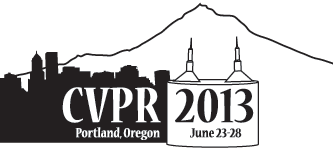-
Radial Distortion Self-Calibration
AbstractIn cameras with radial distortion, straight lines in space are in general mapped to curves in the image. Although epipolar geometry also gets distorted, there is a set of special epipolar lines that remain straight, namely those that go through the distortion center. By finding these straight epipolar lines in camera pairs we can obtain constraints on the distortion center(s) without any calibration object or plumbline assumptions in the scene. Although this holds for all radial distortion models we conceptually prove this idea using the division distortion model and the radial fundamental matrix which allow for a very simple closed form solution of the distortion center from two views (same distortion) or three views (different distortions). The non-iterative nature of our approach makes it immune to local minima and allows finding the distortion center also for cropped images or those where no good prior exists. Besides this, we give comprehensive relations between different undistortion models and discuss advantages and drawbacks.
Related Material
[pdf][bibtex]@InProceedings{Brito_2013_CVPR,
author = {Henrique Brito, Jose and Angst, Roland and Koser, Kevin and Pollefeys, Marc},
title = {Radial Distortion Self-Calibration},
booktitle = {Proceedings of the IEEE Conference on Computer Vision and Pattern Recognition (CVPR)},
month = {June},
year = {2013}
}
These CVPR 2013 papers are the Open Access versions, provided by the Computer Vision Foundation.
Except for the watermark, they are identical to the accepted versions; the final published version of the proceedings is available on IEEE Xplore.
Except for the watermark, they are identical to the accepted versions; the final published version of the proceedings is available on IEEE Xplore.
This material is presented to ensure timely dissemination of scholarly and technical work.
Copyright and all rights therein are retained by authors or by other copyright holders.
All persons copying this information are expected to adhere to the terms and constraints invoked by each author's copyright.

